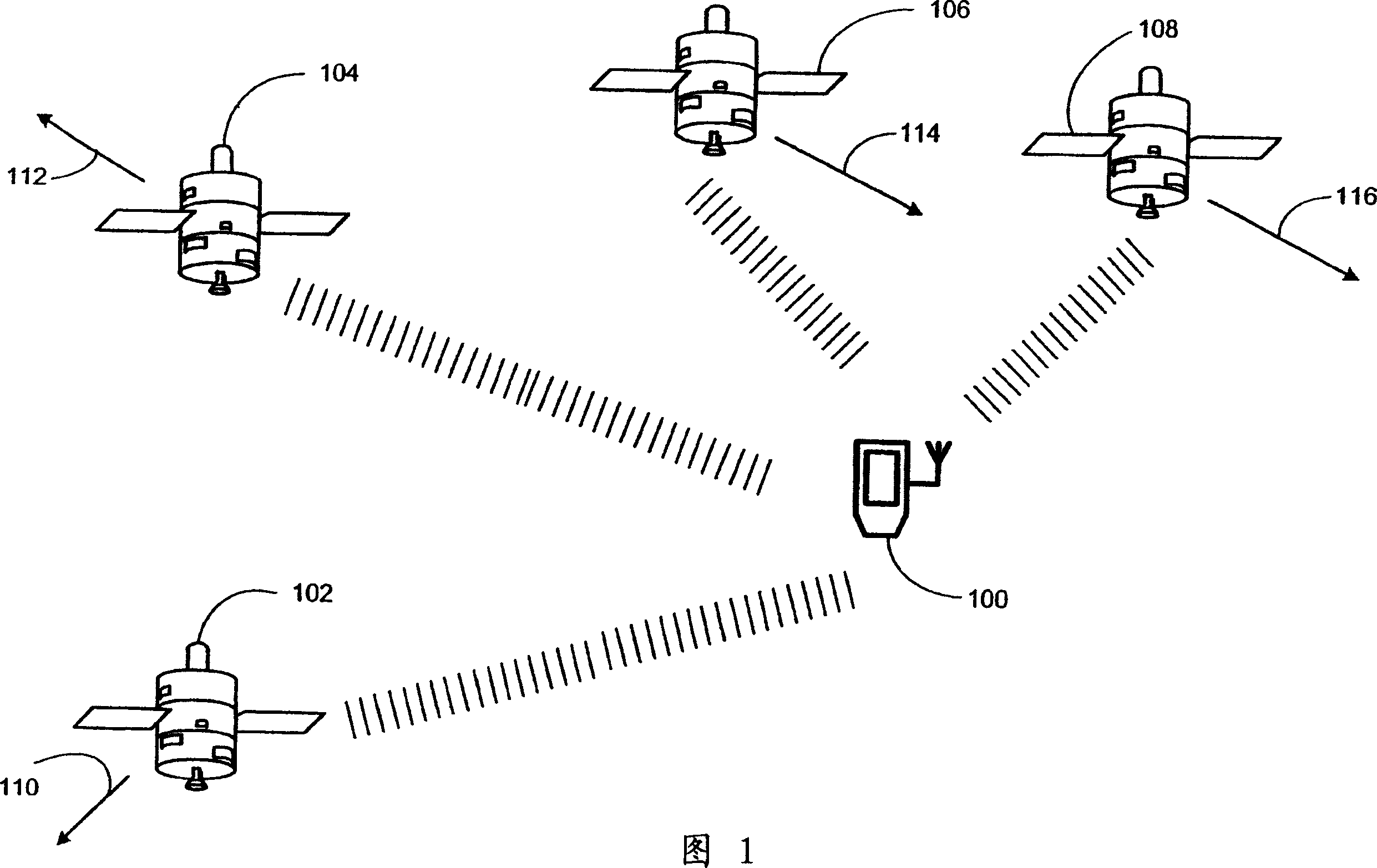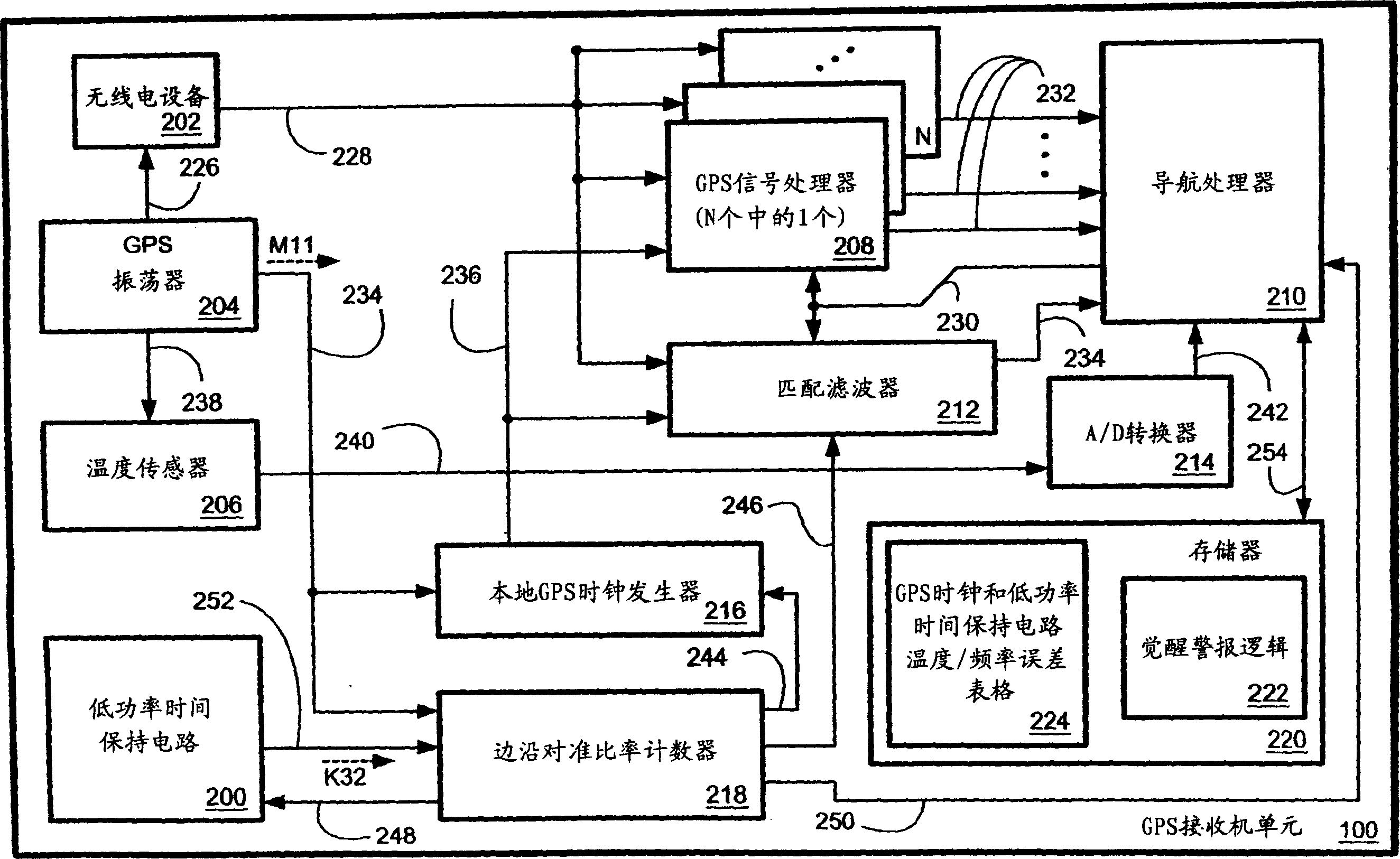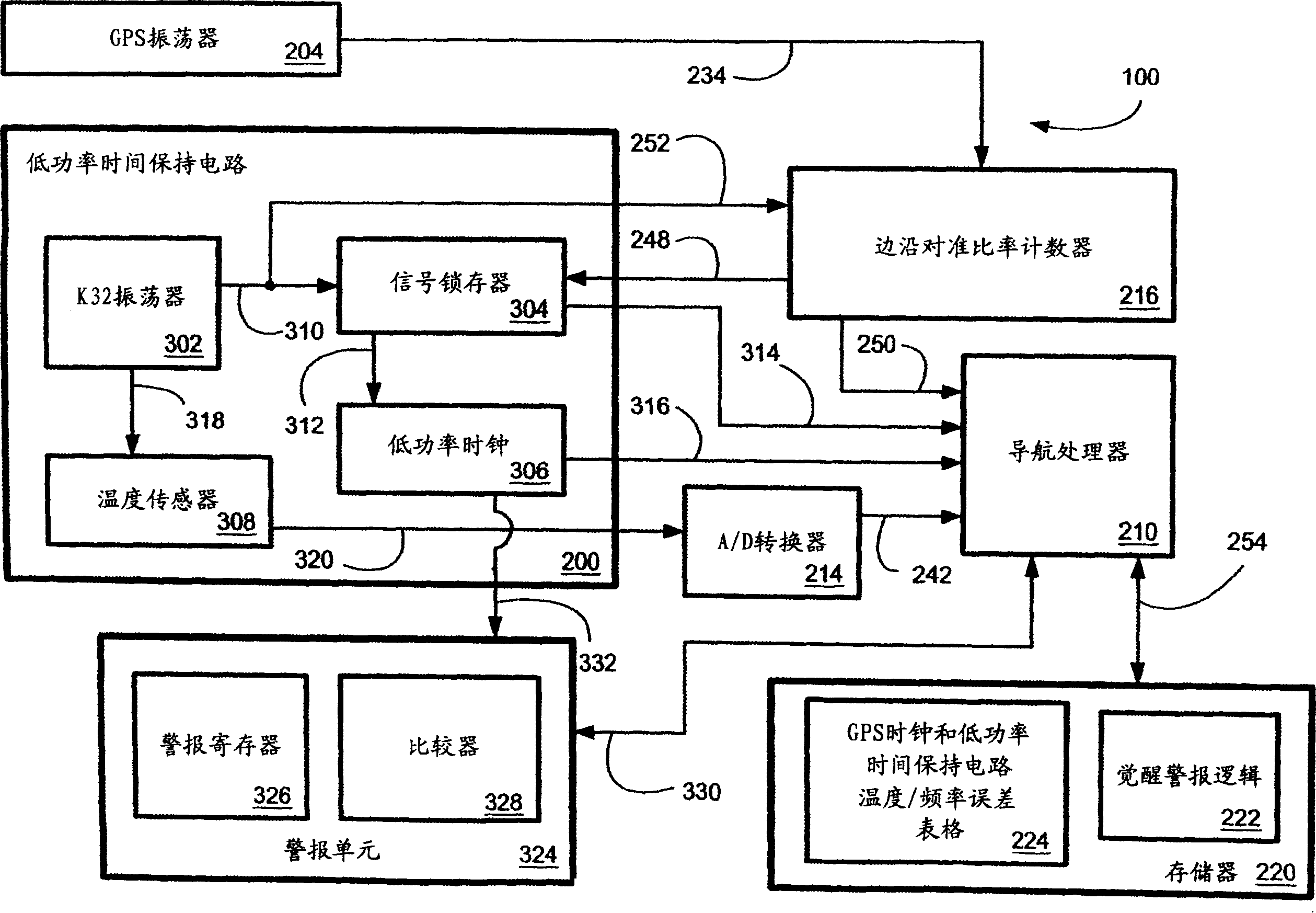Calibrated real time clock for acquisition of GPS signals during low power operation
A global positioning system, low-power technology, applied in the field of global positioning system receivers, can solve problems such as power consumption
- Summary
- Abstract
- Description
- Claims
- Application Information
AI Technical Summary
Problems solved by technology
Method used
Image
Examples
Embodiment Construction
[0027] 1. Introduction to GPS environment.
[0028] Figure 1 illustrates an example environment for the operation of a Global Positioning System (GPS) receiver. FIG. 1 shows a GPS receiver unit 100 and four GPS satellites 102 , 104 , 106 and 108 . Each satellite 102 , 104 , 106 and 108 transmits to the GPS receiver unit 100 . Satellite 102 travels at speed v a + Moving towards the GPS receiver unit 100 along the line of sight (LOS, line of sight) 110; the satellite 104 is moving at a velocity v b - is moving away from the GPS receiver unit 100 along the LOS 112; and the satellite 106 is moving at a velocity v c - Move away from the GPS receiver unit 100 along the LOS 106 . As a result, assuming a carrier wavelength of λ, the transmitted signal from satellite 102 experiences a positive Doppler shift The transmitted signal from satellite 104 experiences a negative Doppler shift while the transmitted signal from satellite 106 experiences a negative Doppler shift
[...
PUM
 Login to View More
Login to View More Abstract
Description
Claims
Application Information
 Login to View More
Login to View More - R&D
- Intellectual Property
- Life Sciences
- Materials
- Tech Scout
- Unparalleled Data Quality
- Higher Quality Content
- 60% Fewer Hallucinations
Browse by: Latest US Patents, China's latest patents, Technical Efficacy Thesaurus, Application Domain, Technology Topic, Popular Technical Reports.
© 2025 PatSnap. All rights reserved.Legal|Privacy policy|Modern Slavery Act Transparency Statement|Sitemap|About US| Contact US: help@patsnap.com



